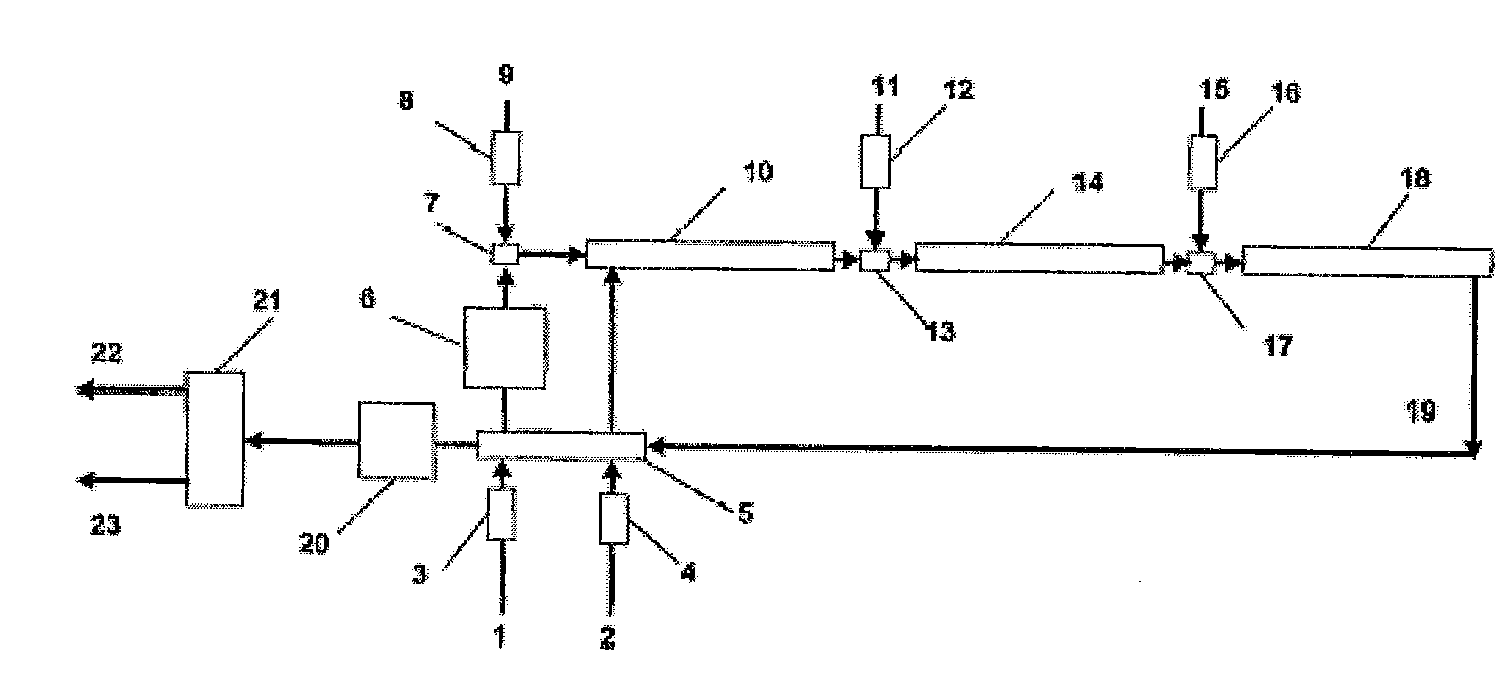System and method for hydrothermal oxidation of water-insoluble organic residues
- Summary
- Abstract
- Description
- Claims
- Application Information
AI Technical Summary
Benefits of technology
Problems solved by technology
Method used
Image
Examples
example 1
[0040]Water-soluble or water-emulsifiable residue. The stream formed by said residue (1) is pressurized at 250 bar by means of a high-pressure pump (3) at the flow rate previously set according to the organic load of the residue. Said pressurized stream is passed through a heat exchanger (5) in counterstream with the reaction effluent (19) circulating at a temperature between 500 and 550° C., such that the feed reaches 400° C. If it is the start of the reaction, the preheating would be carried out through electric resistances (6) which would only be disconnected once the exothermic reaction generates the necessary heat for the system to be energetically self-maintained. In the event that the calorific value of the stream (1) were insufficient to self-maintain the reaction, there is the possibility of introducing another stream (9) of an easily oxidizable material which would act as an additional fuel by means of a high-pressure pump (8). Before entering the first reactor (10), the f...
example 2
[0041]Non-water-soluble and non-water-emulsifiable residue. The stream formed by pure water or by a little concentrated soluble residue (1) is pressurized at 250 bar by means of a pump (3) at the design flow rate. The pressurized stream is passed through a heat exchanger (5) in counterstream with the reaction effluent (19) circulating at high temperature, such that 400° C. is reached. If it is the start of the reaction, the preheating would be carried out through electric resistances (6) which would be disconnected once the exothermic oxidation reaction takes place. The water-insoluble residue (9) is pressurized at 250 bar and pumped through a high-pressure pump (8). Since they are in supercritical conditions, the feed streams (1 and 9) are perfectly mixed in a single phase and air (2) pressurized by the compressor (4) and preheated in a heat exchanger (5) is then injected. The reaming steps are similar to those described in Example 1.
[0042]A pilot plant has been constructed with a ...
PUM
| Property | Measurement | Unit |
|---|---|---|
| Temperature | aaaaa | aaaaa |
| Fraction | aaaaa | aaaaa |
| Fraction | aaaaa | aaaaa |
Abstract
Description
Claims
Application Information
 Login to View More
Login to View More - R&D
- Intellectual Property
- Life Sciences
- Materials
- Tech Scout
- Unparalleled Data Quality
- Higher Quality Content
- 60% Fewer Hallucinations
Browse by: Latest US Patents, China's latest patents, Technical Efficacy Thesaurus, Application Domain, Technology Topic, Popular Technical Reports.
© 2025 PatSnap. All rights reserved.Legal|Privacy policy|Modern Slavery Act Transparency Statement|Sitemap|About US| Contact US: help@patsnap.com


